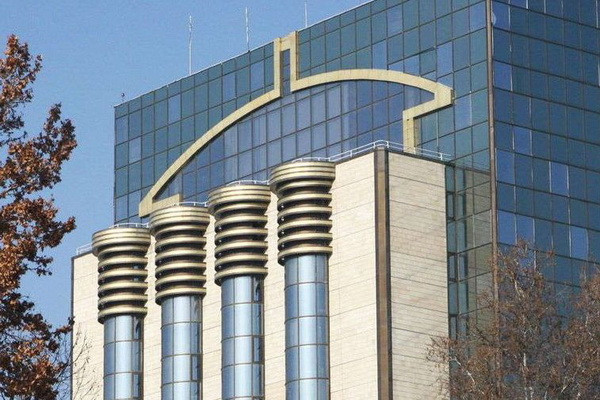
The Board of the Central bank decided to keep the policy rate unchanged
Tashkent, Uzbekistan (UzDaily.com) -- The policy rate of the Central bank was left unchanged at the level of 14 percent per annum, in order to achieve inflation forecasts for the current year, to maintain monetary conditions that slow prices and support savings, at the background of high economic growth dynamics.
On the one hand, the declining dynamics and forecast of inflation create opportunities to cut the interest rate, on the other hand, the risks and uncertainties that remain in the domestic and external economic conditions require keeping interest rate at the current level.
Inflation and inflation expectations. At the end of 2021, inflation was at the intermediate target level of 10 percent.
The main factors that created the inflationary environment over the past year were a significant increase in food and energy prices. The rise in prices is explained, on the one hand, by global inflation trends and, on the other hand, by reasons related to competition and supply in the domestic market.
The core inflation rate also fell to 8.8 percent by the end of 2021, the lowest level in the last five years.
According to a survey conducted in December last year, inflation expectations of the population and entrepreneurs for the next 12 months shifted to a downward trend after the upward trend in September-November and amounted to 15.7 and 14.9 percent, respectively.
At the same time, respondents cited rising gasoline prices, transportation costs, rising prices for basic foodstuffs and imported goods as the main factors of inflation expectations.
Economic activity and aggregate demand. Overall, last year was a year of economic recovery after a sharp decline in 2020. According to preliminary data, GDP grew by 7.4 percent in real terms in 2021.
Fiscal expenditures directed to the economy and loans from commercial banks were the main factors supporting economic and investment activity.
While loans issued to the economy by commercial banks last year increased by 31 percent compared to 2020, the loan repayment rate improved significantly to 71 percent. Loans to individuals also grew by 42 percent, serving to support the population’s demand for consumer goods and mortgages.
According to estimates, the impact of high fiscal stimulus in 2021 will continue in 2022, and from the second half of the year, economic growth rate will approach its long-term trend, namely the potential growth rate.
External economic conditions. The year 2021 was shaped by the acceleration of global inflation as a result of rising food and fuel prices and the tightening of monetary conditions in many developing countries in response. At the same time, inflationary processes, which were initially recognized as temporary, suggest that at the end of the year, against the background of uncertainties and pandemic risks, prices may be under pressure for a longer period of time.
Although there were no significant fluctuations in the currencies of major trading partners (except Turkey) over the past year, inflation in them has been sharp.
At the end of 2021, the depreciation of the sum was 3.4 percent, the lowest level in three years.
In this regard, the increase in export revenues and cross-border remittances by 34 percent in 2021, respectively, was a factor supporting the supply of foreign exchange in the domestic FX market and contributed to a 1.6 times increase in total supply in the market.
Monetary conditions. By the end of 2021, the situation in the money market was formed under relatively tight conditions, with “Uzonia” and “Uzwia” indices averaging around 13 percent. During the year, the dynamics of interest rates in the money market reflected the almost doubling of interbank operations and a sharp increase in the activity of monetary instruments.
In general, the activation of monetary operations in liquidity regulation over the past year, in turn, has led to a significant increase in costs and liabilities of the Central Bank.
The weighted average interest rates offered by banks on term deposits in the national currency in December amounted to 20.2 percent for individuals and 15.1 percent for legal entities, which created a positive difference from inflation expectations.
This, in turn, contributed to a 1.5 times increase in the total term deposits in local currency last year, including 1.7 times for individuals’ deposits.
In the last months of 2021, interest rates on loans in the national currency was also balanced, within the corridor of 20-22 percent, which has been observed since the beginning of the year.
In particular, in December, the weighted average interest rates on short-term loans in the national currency amounted to 21.2 percent and 20.5 percent on long-term loans.
Forecast and risks. According to the baseline scenario of macroeconomic development, this year the Central Bank intends to maintain relatively tight monetary conditions.
In the context of ongoing global inflation, rising prices for raw materials and energy resources in foreign markets, the pandemic situation, the risks associated with the slowdown in global economic growth suggest that the inflation rate will be in the range of 8-9 percent by the end of this year.
It is also projected that real GDP growth in 2022 will be around 5.5-6.5 percent. At the same time, the past fiscal stimulus directed to the economy in 2020-2021 will be one of the main factors supporting economic activity in the first half of 2022.
The current monetary conditions are calculated in accordance with the forecasts of macroeconomic indicators, and in the future, as the inflation forecast decreases, there may be opportunities to cut nominal interest rates, keeping real interest rates unchanged.
The Central Bank will carefully study the inflationary factors and risks arising from external and internal economic conditions and take appropriate measures to eliminate them.
The next Board meeting of the Central Bank to consider the main policy rate is scheduled for 10 March 2022.